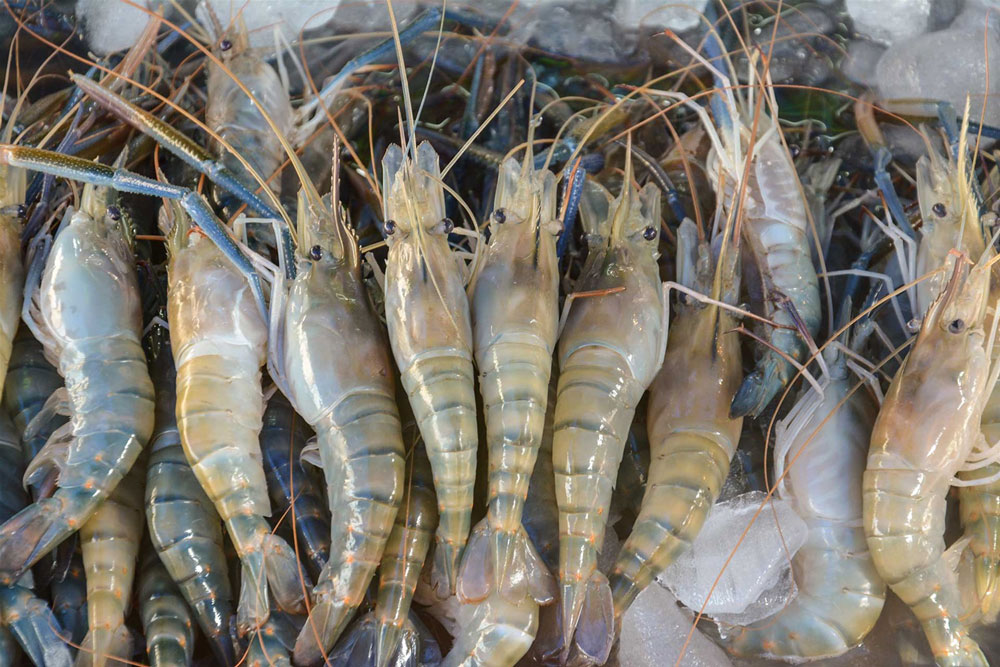Vietnam Seafood
Vietnam shrimp secures third place in EU – intense rivalry with Ecuador and India
In terms of product composition, whiteleg shrimp accounted for 80% of export value to the EU. Meanwhie, value-added shrimp products contributed over 50% of total export revenue to the bloc.
EU shrimp imports rebound strongly but show signs of moderation
According to EU shrimp import data, the EU remains one of the world’s largest shrimp importers, with total imports in the first eight months of 2025 reaching 289,142 tons valued at €1.8 billion – up 19% in volume and 24% in value compared to the same period in 2024. However, growth moderated in August, with import volume increased by only 6% and value by 8%, stabilizing price stabilization and more cautious buying behavior among EU importers following strong purchasing activity in the first half of the year.
In the EU’s shrimp import product structure, raw frozen shrimp continued to dominate in the first eight months, accounting for 252,789 tons, while value-added processed shrimp reached 36,353 tons. Both categories recorded 19% growth year-on-year. Despite its smaller share, value-added shrimp remains a strategic growth segment for the EU, creating opportunities for exporters with advanced processing capabilities – among which Vietnam is one of the few Asian suppliers with a distinct competitive edge.
Vietnam holds third place in the EU – competing with two shrimp powerhouses
EU import data shows that in the first eight months of 2025, Vietnam exported 35,004 tons of shrimp to the EU, up 14% year-on-year, securing third position among the bloc’s largest suppliers. The top two positions were held by Ecuador (160,139 tons) and India (36,880 tons).
Ecuador maintained its top position with 36% growth, driven by large-scale farming, low costs and an aggressive expansion into processed products. India recorded 27% growth, expanding both its raw shrimp and basic-processed segments. Vietnam, while posting steady gains, grew at a slower pace, focusing primarily on value-added processing, which accounted for over 50% of its total shrimp export value to the EU – a significant advantage compared to its two main rivals.
Leverage from EVFTA and strong processing capabilities
Vietnam remains one of the few Asian nations with a free trade agreement with the EU (EVFTA), granting zero tariffs on numerous shrimp product lines. In addition, the country possesses a robust network of EU-compliant processing plants, many of which hold export registration codes. These strengths enable Vietnamese shrimp to penetrate deeper into European supermarket chains and distribution networks.
As EU consumers increasingly prioritize sustainability, traceability and carbon footprint reduction, Vietnam’s strategic shift toward high-tech aquaculture and international certifications such as ASC, BAP and GlobalGAP has become a major competitive edge, reinforcing its market share and reputation as a responsible supplier.

Strategic directions for Vietnamese shrimp exporters
Despite the increasingly fierce competition, new opportunities are emerging for Vietnamese shrimp businesses in the EU market.
First, the premium processed shrimp segment still offers significant growth potential – particularly convenience products (ready-to-cook, ready-to-eat) serving retail and foodservice sectors in Europe. These items yield higher profit margins and are less affected by raw material price fluctuations.
Second, enterprises need to invest in electronic traceability systems and collaborate with EU customers to ensure compliance with environmental and social standards from the farming stage. Early adopters will gain the trust of major supermarket chains and improve their chances of securing long-term supply contracts.
Additionally, companies should strengthen direct connections with distributors and retailers, rather than relying solely on intermediaries. The “Private Label” model – producing products under supermarket own brands – presents a promising direction for many Vietnamese shrimp enterprises seeking deeper market penetration.
In Q4/2025 and throughout 2026, the outlook for Vietnam’s shrimp exports to the EU remains positive, especially as holiday demand rebounds. However, growth may moderate due to abundant global supply and cooling export prices.
With advantages in processing capabilities, export experience and EVFTA tariff preferences, Vietnam can still capture significant opportunities in the EU market – if enterprises quickly adapt to new standards and strengthen the national brand’s reputation.
Source: https://seafood.vasep.com.vn/



 Tiếng Việt
Tiếng Việt